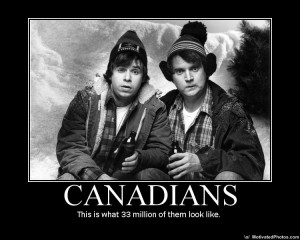A Rumors And Rants History Lesson: Frank Filchock
September 15, 2009 - 4:29 pm by Matthew Glenesk He was a celebrated college hero from my beloved alma mater I had never heard of.
He was a celebrated college hero from my beloved alma mater I had never heard of.
A quarterback so good he stole playing time from Hall of Famer Sammy Baugh.
He served in the U.S. Navy during World War II only to come home and play a major role in one of the NFL’s worst gambling scandals.
He was banned from American football and nearly split the Canadian league. And he was the first coach of a current NFL franchise.
I came across Frank Filchock’s name when I was researching the longest pass play in NFL history. Of course, the record is 99 yards, and 12 quarterbacks have achieved the feat.
There are familiar faces among the dozen. There’s attention whore Brett Favre, Indiana alum and walking concussion Trent Green, Playmated Jeff Garcia, Stan “The Man” Humphries, Otto Graham, Gus “Headbutt” Frerotte, Sonny Jurgensen, Jim Plunkett and ESPN sensationalist Ron Jaworski.
But then there are some not so familiar names, like George Izo, Karl Sweetan and our boy Frankie Filchock, who was the first (1939) and still the youngest player (23) to ever complete a 99-yard pass in the NFL.
But first, why I’m obligated to adore Filchock, who I just realized has a name that sounds like what happens to a penis after anal. That’s not why I love him.
This is why: On Nov. 6, 1937, Filchock, a star at Indiana University, led the Hoosiers to the ever rare victory over Ohio State, defeating the Buckeyes 10-0 on the road.
IU is 12-65-5 all-time against the Buckeyes. I can’t wait for the Oct. 3rd matchup in Bloomington. It’s the lone time IU’s media relations people can take photos of the stadium filled with red, so they can use something for the cover of next year’s football media guide.
Filchock was drafted in the second round of the 1938 draft by the Pittsburgh Pirates (now the Steelers). The Pirates first round pick that year Byron (Whizzer) White, who later became a U.S. Supreme Court judge. Frankie should have kept Whizzer’s number, he’d need a good lawyer shortly.
Filchock played six times for Pittsburgh before being sold to the Washington Redskins, where he served as Sammy Baugh’s understudy. He stayed four seasons with the Redskins and Filchock and Baugh would alternate quarters, allowing for the nicknamed QBs, Slingin’ Sam and Flingin’ Frank.
On Oct. 15, 1939, Filchock was the first player in NFL history to throw a 99-yard touchdown pass. The toss was to Andy Farkas and was coincidentally against Filchock’s old club, Pittsburgh. Farkas is of note because he is in both the Michigan and Ohio Sports Hall of Fames and is credited for being the first player in the NFL to wear eye black because of a photo taken in 1942.
 Filchock led the league in touchdown passes twice (1939 and 1944) and won the league’s passing crown in 1944, narrowly beating out Baugh.
Filchock led the league in touchdown passes twice (1939 and 1944) and won the league’s passing crown in 1944, narrowly beating out Baugh.
Filchock also played minor league baseball from 1938-40. He played for the Evansville Bees of the Illinois-Indiana-Iowa League in 1938 and spent two seasons with Detroit’s D-Level affiliate, the Fulton Tigers. In 409 at-bats, Filchock hit .335 with three HR, 26 doubles and six triples.
Filchock missed the 1942 and 1943 pro football seasons while on active duty with the U.S. Navy.
Upon returning to the NFL, Filchock was traded to the New York Giants in 1945. Giants owner Tim Mara wound up exceeding his traditional salary ceiling for Filchock and agreed to the first multi-year contract in team history. Filchock was seen as a perfect fit in New York’s A-Formation offense led by coach Steve Owens. In his first season with the Giants, Filchock threw for 1,262 yards and 12 touchdowns and ran for another 371 yards and was named an All-Pro at halfback and the Giants’ MVP.
In his second season with the G-Men, Filchock led the team to a 7-3-1 record and a first place finish in the Eastern Conference, setting up an infamous date with the Chicago Bears in the 1946 NFL Championship Game.
A day prior to kickoff of the title game, New York City mayor Bill O’Dwyer, NFL commissioner Bert Bell, police commissioner Arthur Wallander and Mara met in the mayor’s office after getting word that gamblers had approached two Giants’ players in attempts to fix the game. The two players were Filchock and Giants’ running back Merle Hapes. The two were summoned to the mayor’s house later in the day and Hapes admitted he had been approached. Filchock denied it.
At 2 a.m. Sunday, just 12 hours before kickoff, the NYC district attorney’s office announced that Filchock and Hapes had been offered $2,500 each plus the profits from a $1,000 bet that Chicago would win by more than 10 points. In addition to the wager, the players supposedly were offered offseason jobs that could have netted them another $15,000 each.
The police cleared both players from actually taking a bribe, but the league’s commissioner, Bell, decided to launch his own investigation. Because Filchock denied any contact with gamblers and was able to play in the game. Hapes, who admitted being approached by gamblers, was not allowed to play because he failed to report the bribe attempt.
The story broke over the radio just hours before kickoff and Filchock was heavily booed during player introductions. With a cloud hanging overhead, the quarterback accounted for both Giants’ touchdowns, throwing scoring passes to Frank Liebel and Steve Filipowicz. But he did little to ease any lingering concerns about a possible fix when he went all Jake Delhomme on us and threw six interceptions. Alas, the Giants lost 24-14. Ah, that 10-point betting line of the gamblers. They neither won nor lost their bets. How apropos.
The head conspirator, Alvin Paris, the infamous sports bookie in New York who had profited from other athletes such as Rocky Marciano, was convicted of bribery Jan. 8, 1947. That same day, Bell suspended both Filchock and Hapes, despite the judge in Paris’ trial saying “Frank Filchock was not an accomplice, and was in fact an unfortunate victim of circumstances.”
Paris didn’t testify in his own trial, but served as the prosecution’s witness in the trial of three other gamblers. He told the court he placed $500 bets on the Giants beating the Redskins in the regular season finale with the intention of giving the proceeds to Filchock and Hapes.
Paris said Hapes took the money without a fuss, but that Filchock needed to be persuaded. The convicted schemer also said that Hapes was willing to throw the championship game and that Filchock slept on the idea, but eventually decided against it.
The two players testified at the trial as well, and denied basically everything Paris said.
Within 24 hours of a guilty verdict for the three gambling conspirators, Bell went all Roger Goodell on Hapes and Filchock, extending their suspension indefinitely. The league commissioner claimed the players were “guilty of actions detrimental to the welfare of the National Football League and of professional football.”
So Filchock was banned from playing football in the States and was forced to accept an offer to play north of the border in Canada. And he basically tore the league apart.
In 1947, he joined the Hamilton Tigers with a speculated salary of $7,000 for the season. Problem was, the Interprovincial Rugby Football Union was still considered an amateur competition. Most people assumed players were paid small amounts under the table, but for a player with Filchock’s high profile it was hard to turn a blind eye. The league voted that he couldn’t play in the league. Hamilton played him anyway, forfeiting games in advance before the league voted unanimously to allow Filchock to finally play.
But in 1948, Hamilton withdrew from the league after disputing its team deserved a greater share of ticket sales that Filchock’s appearances generated at away games. Their complaint was that since they were the one’s paying his lofty price tag, they should be entitled to the benefits. The other teams didn’t bite.
Filchock jumped over to the Montreal Alouettes in 1949 with a reported $20,000 over two years and helped guide the team to the Grey Cup, Canada’s Super Bowl.
In July 1950, Filchock appealed to be reinstated to the NFL. The Alouettes’ team president accompanied Filchock to a hearing before Commissioner Bell, which included testimonials from businessmen, clergymen and sportsmen singing Filchock’s praises. New York’s mayor and assistant DA also urged Bell to reinstate Filchock.
Bell did. However, a 34-year old Filchock played just one game for the Baltimore Colts in 1950, completing a one-yard pass on three attempts. He never played again in the U.S., and finished his career in Canada. He was a player coach for the Edmonton Eskimos and led them to the 1952 Grey Cup, but was fired after he demanded more money.
He spent seven more years in Canada as a coach before being named head coach of the Denver Broncos of the new American Football League on Jan. 1, 1960. He was fired after two seasons with a 7-20-1 record.
Filchock died in 1994 at the age of 77. Less than 30 days later, the other player who was linked with him in the 1946 gambling scandal, Merle Hapes died as well.




3 Responses to “A Rumors And Rants History Lesson: Frank Filchock”
edmonton eskimos? really?
canadians are so cold and funny.
By roundthewaygirl on Sep 15, 2009
I was convinced the other guy’s name was Merle Herpes at first glance.
By Hick Flick on Sep 16, 2009
Thanks so much, thebaker.
Mr. Filchock was our god; us kids at St.Joseph High in Denver back in’63-’64, right before he went up to Canada. He was a father figure, a brilliant tactician of the game, and he told me not to be too concerned the night I rode back in the cab of the old “blue goose” with him; after Chuck Pfeifer relieved me of two teeth during practice. Having drilled hard for a month or so at the beginning of the season, we shed our pads and practiced timing drills in shorts, jocks, jerseys, sometimes helmets, and always cleats. Chuck got me that night.
“Ah, don’t feel too bad, Paddy. Look here,” he said smiling. Sure enough, he’d lost a couple of teeth himself. It didn’t make me feel a whole lot better, but Mr. Filchock…he was the greatest.
Mr. Filchock brought guys like Lionel Taylor down to our practices to coach our ends. Gene Mingo, I think. Wahoo McDaniel. Other lesser lights from the Broncos.
We lost the big game to Mullen that last year he coached us, but because of Mr. Filchock we were dubbed “The Cinderella Team.”
It was a magical two years. Ask any member of that rag-tag bunch of kids he coached what they think about Mr. Filchock and they will tell you he is the fourth member of the Holy Trinity.
We loved him.
By Patrick Sean Lee on May 21, 2011